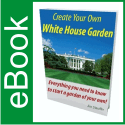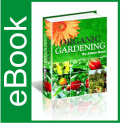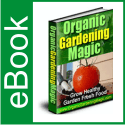Indoor Container Vegetable Gardening Ideas
Indoor Container Vegetable Gardening Ideas
Article by Susan Gilbert
If you are an apartment dweller, look to your patio and balcony to provide the perfect place to start your indoor container vegetable garden. Herbs can be grown indoors easily as well. An added benefit to indoor container vegetable gardening is you can do this all year round!
You may raise an eyebrow or two at this suggestion, but it can be done, within limits. Certainly pumpkins, squash, and sweet corn are not going to be items grown inside the average home. But, many leafy crops, root crops, tomatoes, and other vegetables can be grown indoors during the cold months of the year. You don’t need a large outdoor garden to enjoy growing fresh vegetables.
Container gardening is great because you can position your containers for the best light exposure and best growing conditions. Although vegetable production will be limited by the number and the size of your containers, indoor container gardening can be very rewarding. So, let’s get started with a plan for your vegetable harvest for this year!
Here are a few vegetables to consider for indoor growing: Cherry tomatoes, Hungarian sweet peppers, ‘Gypsy’ peppers, Short vined cucumbers and squash, Endive, Radishes, Spinach, Swiss Chard, Leaf Lettuce, Miniature cabbage, Eggplant, Chives, Green onions, Bush beans and most any Herb.
Planning your garden is one of the most important parts of container vegetable gardening. You can have hanging baskets, pots, and planters filled with various crops that will perform fairly well if lighting, pollinating, watering, fertilizing, and temperature requirements are met. Decide what pots you want to use, and then choose your soil carefully. Soilless mixes like peat-lite are usually too light for container vegetable gardening and will not support plant roots effectively. However, indoor gardening soil is different than regular garden soil, so inquire at your local nursery as to the best soil for your container gardening. Preparing your garden soil for planting is the most physically demanding part of vegetable gardening and may also be the most important part.
Next, you need to decide whether you will be starting your vegetables from seed or from started plants. If you are new to gardening, starting vegetables from seed may be too huge an undertaking, instead purchase plants. Successful vegetable gardening involves far more than just popping a few seeds into the ground and waiting for a tomato to appear. Even if you start with a small existing plant, you will have the joy of tending, nurturing, and stacking your growing vegetables. Added to the pleasure of vegetable container gardening will be the satisfaction derived from eating your vegetables fresh.
Learning is a process, vegetable gardening needs time. As in so many other pursuits, it is true in the art of vegetable gardening: practice does make perfect. Indoor container vegetable gardening might not be quite the same as growing the same plants outdoors, but it can be fun to tend an indoor vegetable garden when the snows are blowing and the winds are roaring outdoors! Your family and friends will be delighted and surprised when your serve that salad with the green onions and cherry tomatoes they discover that you harvested that day from your indoor container vegetable garden!
About the Author
Susanne Garris is a gardening enthusiast and green thumb advocate who enjoys helping others get started with easy gardening tips. To find out more about how to choose the right container, get her free report “Indoor Gardening Secrets” instantly by clicking here! <ahref=”http://www.myeasygardening.com”>Indoor Gardening Secrets

 December 11, 2011
December 11, 2011 







